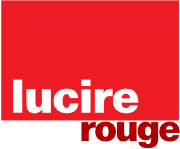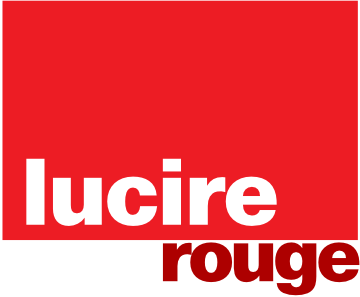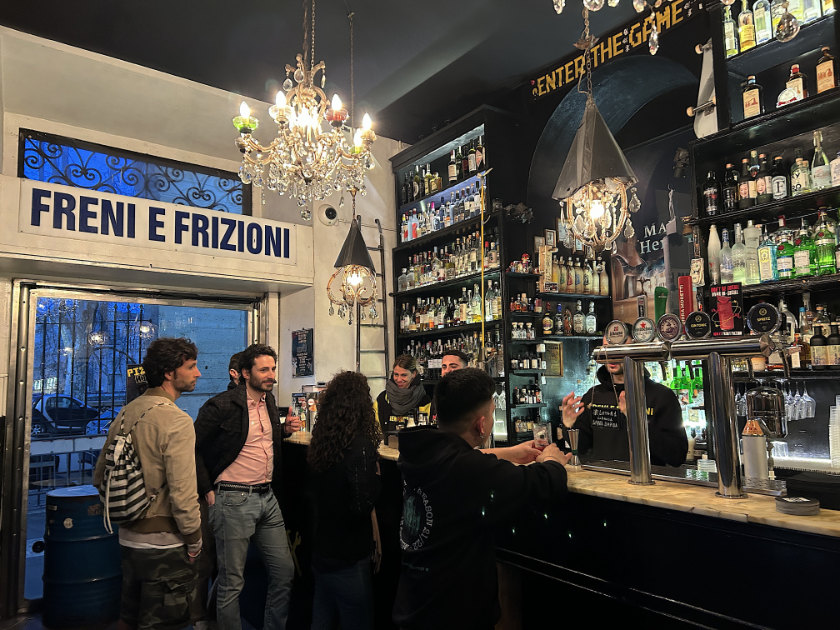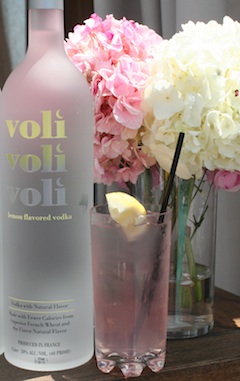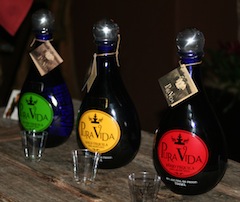Really Rome: Lauren Caramico gives her insider knowledge at Davvero Rome
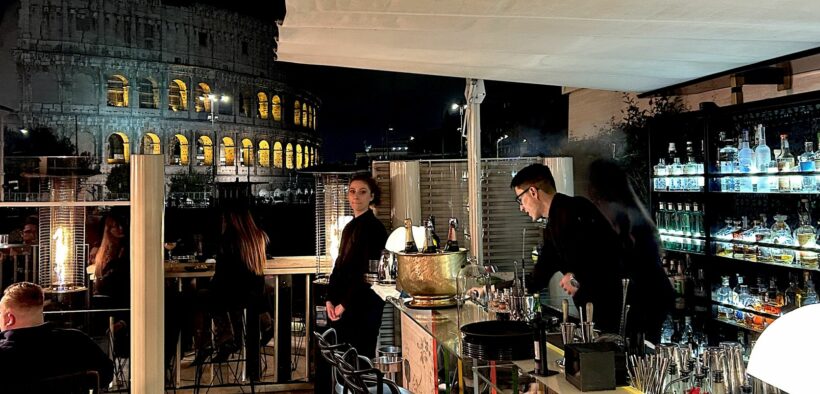
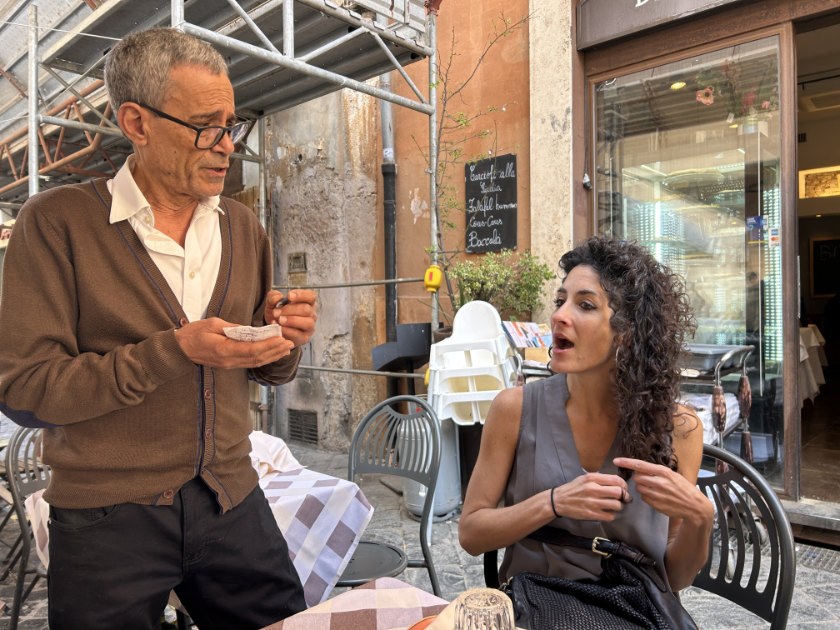
Lauren Caramico at Baghetto.
As the ages-old maxim goes, ‘When in Rome, do as the Romans do.’ However, Lauren Caramico knows better. She left a covetable ad agency career in her native New York City in 2016 to become a permanent resident of Rome. While this leap of faith ended up being a dream come true, it involved lots of research and planning. In the process, she circumnavigated the food and bar landscape and got to know restaurateurs, bar owners, and culinary creators. They helped inspire her to develop the kind of business that would bring her much joy as it would her clients. Although the global pandemic complicated her plans, many of the people she met became just like family and provided validation that she had made the right move.
Although there are many excellent hotel restaurants and lounges (including Sofitel’s own Settimo, the exceptional Il Vizio at the Bernini-Bristol Palace, and Jim’s Bar and the rooftop restaurant of the Singer Palace), both first-time and frequent visitors to Rome Caramico came across expressed that they wished they had a “friend in town” to steer them toward legit local favourites and away from tourist draws. As travel began making its comeback in 2021, she was able to officially establish Davvero Rome (roughly translated as ‘Really!’) to make that happen. Through its impressive word of mouth in the two years since, it got the attention of Sofitel Villa Borghese Hotel, whose management added Davvero to an exclusive concierge roster for its guests.
When we first speak, Caramico points out that Rome’s dining and bar scenes are evolving in ways that YouTube travel tip videos can’t capture. Revitalized industrial neighbourhoods are surfacing, and their “experiential” bars are what’s pulling in regulars.
Because you can’t see Rome in a day
After waking up refreshed at the Sofitel Villa Borghese, grabbing a coffee and Franco–Italian pastries at Settimo, and plotting my stay from the outdoor terrace, I hit several local charity shops. From there, I move on to the Villa Borghese Museum having missed out on it on past trips. I just barely make it to our first meeting place, Doppiozeroo, an Ostiense neighbourhood coffee bar–bakery by day, and the residents’ aperitivo hangout of choice by evening. While the décor is simple, it is dominated by its open-concept bakery–kitchen turning out sweets, savouries, and ten different types of Roman-style pizza (long, thin-crusted, crispy, and cut into slim rectangles).
Over Aperol spritz cocktails and a stack of piping hot slices with different toppings, Caramico affectionately describes it as her ‘home away from home’ during her first months as a permanent resident. While I have died and gone to pizza heaven, she smiles wryly and tells me there are better representations elsewhere in town.
Caramico has arranged for me to meet Matteo Zed, bar manager of the Court (a posh rooftop bar overlooking the Colosseum) for an assignment I am preparing for a US trade magazine. She explains that what sets her VIP Bar Tour apart is that it’s anything but a pub crawl. In order to build a Rome into a craft cocktail destination, Zed, Anthony ‘Tony’ Parlapiano (credited as the godfather of Rome’s modern craft cocktail scene) and others built their reputations by working overseas at internationally acclaimed bars and participating in the competition circuit before returning home with the knowledge and marketing savvy to create their own venues reflecting their mastery of the craft and pride in Italian spirits and ingredients.
‘The places I am taking you Saturday night are frequented mainly by locals,’ she insists. ‘My Aperitivo tour, meanwhile, drives home the fact that late afternoon aperitivo hour is so much more than your average happy hour in the US. In Italy, it is a ritual, the perfect way to catch up with friends over food and drinks in a meaningful way. More importantly, the new generation has introduced new and different types of aperitivo settings and you’ll see how aperitivo hour traditions connect with current culture. What surprises visitors the most is that food is not just available in many bars, but is high-quality, beautifully presented, and free of charge with the cocktails.’
continued below
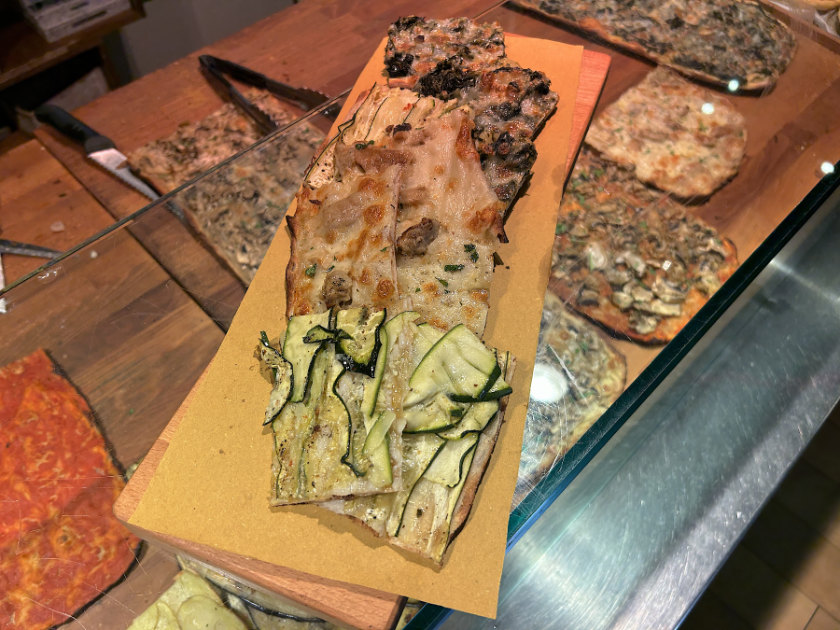
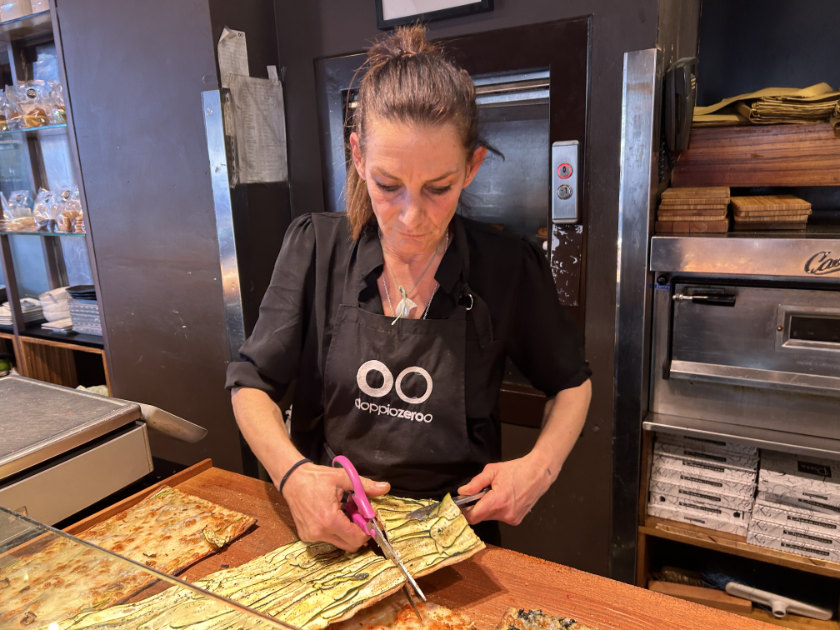
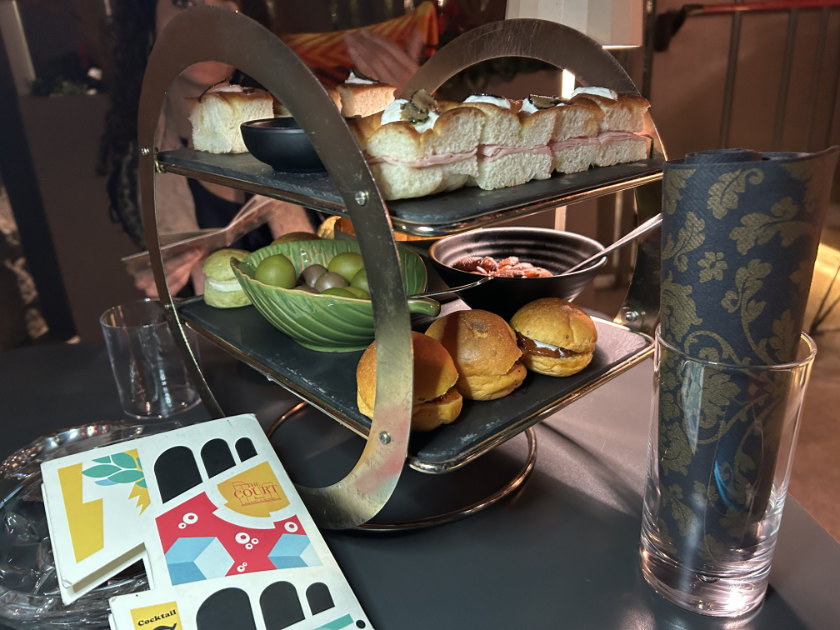
Above, from top: Pizza at Doppiozeroo. Cutting a base at Doppiozeroo. The Court’s aperitivo food.
‘Rome used to be a big, international village rather than a cosmopolitan city like New York City or London,’ Zed recalls after joining the conversation. ‘With recent developments, many major hotel companies have now started investing in Rome, and we will be seeing (international hoteliers) open luxury hotels in a year or two. We’re now in a place where we can become the city of the future, yet I know the drink selections will be similar to what one may find in North America in some places. Because of our efforts, people come from around the world specifically to seek out bars like ours included in the World’s 50 Best Bars list in Rome. While my bar is at the Palazzo Manfredi hotel, my vision is about encouraging locals who love cocktails to treat the Court as a cocktail destination.’
From there, Caramico and I head to the San Lorenzo neighbourhood to meet up with Parlapiano at Lore, another one of her favourite hangouts that juxtoposes mediæval architecture, boho-chic, and a few hits of neon. From my perspective as a long-time Angelino, San Lorenzo reminds me of Los Angeles’ Venice with its colourful street art and playfully named and designed businesses. And its another neighbourhood I wouldn’t have thought of visiting had she and Tony Parlapiano not suggested it.
After ordering cocktails off Lore’s gorgeous menu, Parlapiano detailed how he and his peers established a new and definitively Roman cocktail scene, starting with the opening of his Jerry Thomas Project in 2010, which he hoped would lead to a wide spectrum of bars the father of the modern cocktail would be proud to patronize. As Parlapiano and I talk shop, Caramico chats with Lore’s owners. Her body language that reflects her commitment to their success and assurance her guests will go off the beaten track to discover Lore and San Lorenzo.
Small bites, big flavours
Three weeks prior to our departure for Italy, Caramico, Lucire’s Jody Miller and I connected via Zoom to work out the details and, in the process, see how her approach differs from other tours. It was interesting to observe how animated Caramico got during the call when translating our notes and interests into an itinerary while addressing the challenges of working in our “must-tries”. Noting we’re both equally passionate about craft cocktails, we added in her Saturday night VIP Bar Tour, which would include leisurely visits to the Jerry Thomas Project and the Court.
Our afternoon lunch tour was appropriately sandwiched between an extended tour of Colosseum, Forum, and Palatine Hill with shopping time on the back end. Upon her suggestion, we stopped by the Campagna Amica Market which serves the residential communities near the historic sites before the start time on our Colosseum tickets. When it was time to march toward our epic customized four-hour lunch, we met at the tour’s trailhead, Ba’ Ghetto in the historic Jewish Quarter. This restaurant has national-institution status, with locales in Jewish quarters of other major Italian cities. Among the three separate Ba’Ghetto restaurants in the quarter, we met up with Caramico at the location known for its Roman artichokes prepared two ways, with fresh-baked pizza crust bread to absorb the olive oils each one was prepared in.
continued below
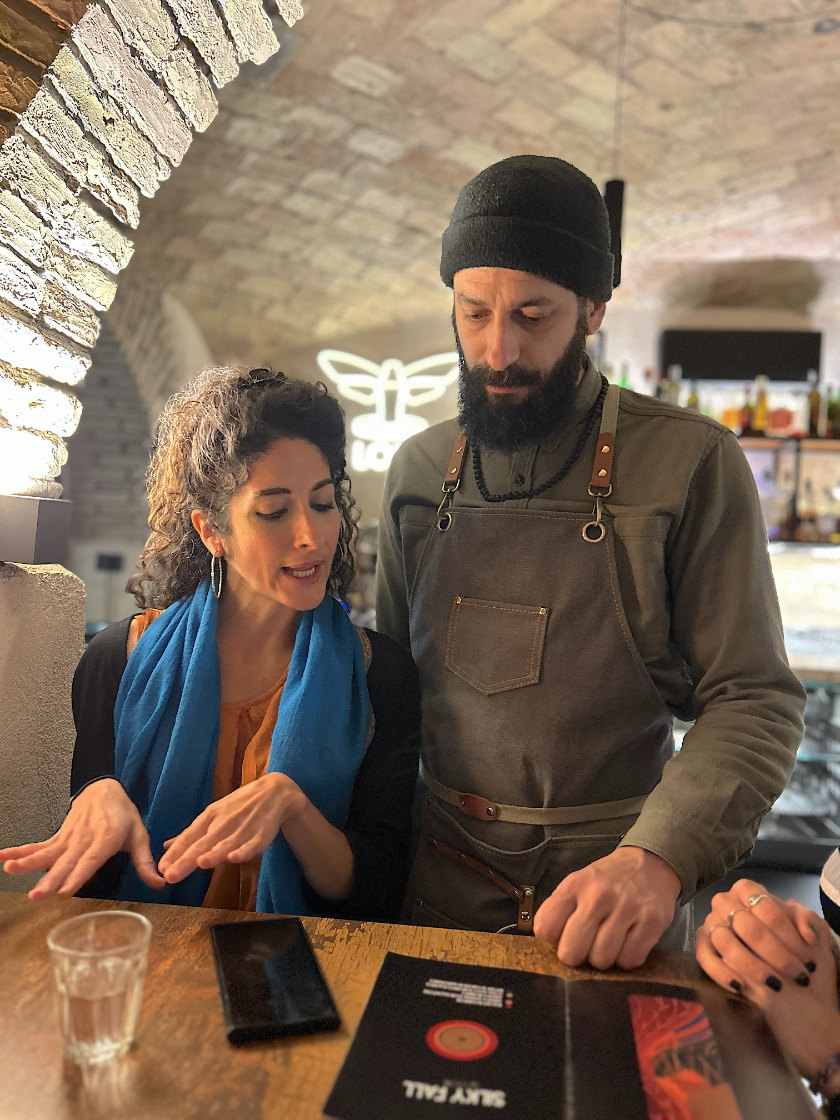
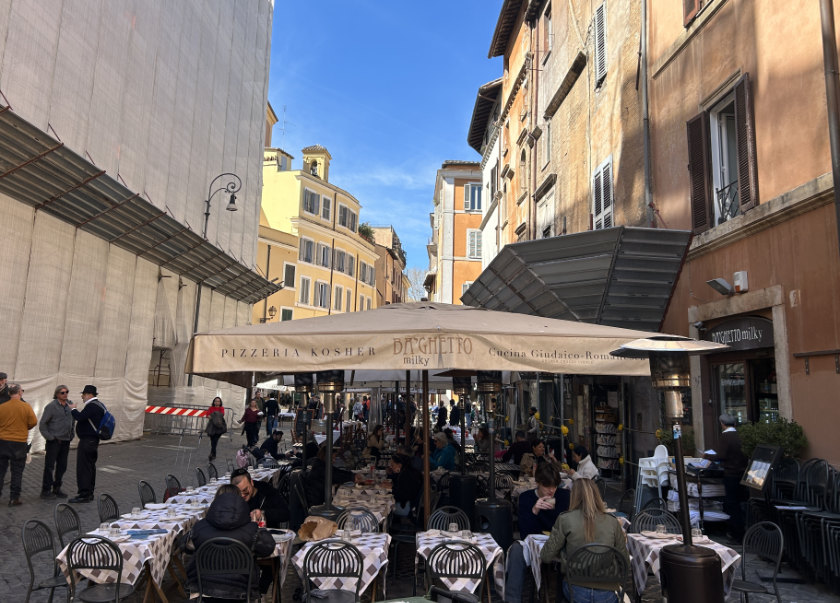
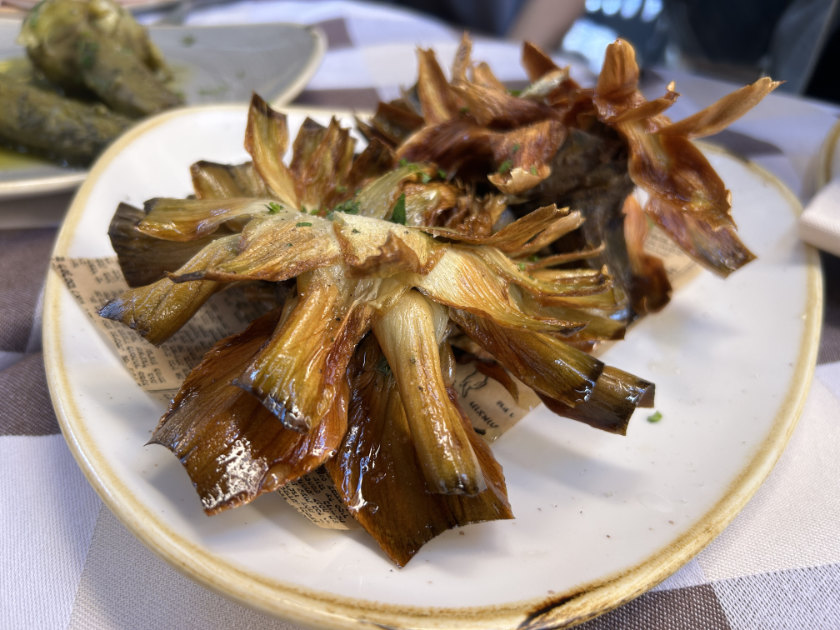
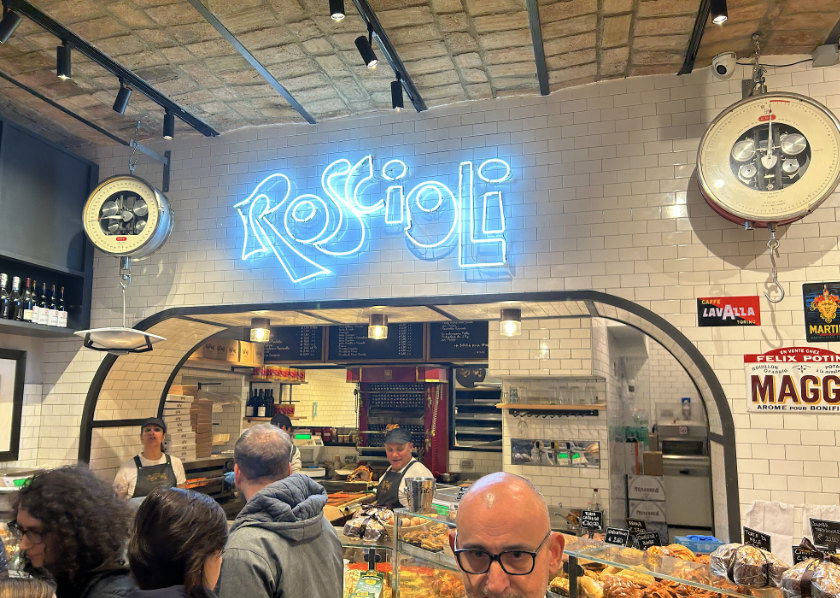
Above, from top: Lauren Caramico at Lore. Outside at Ba’Ghetto. Artichokes at Ba’ghetto. Antico Forno Roscioli.
After Caramico takes a few moments to catch up with the owner in Italian, we assess our surroundings and notice practically every table in the outdoor seating areas of every restaurant is filled with people of all ages—and it’s a weekday. And it embodies a big reason why she set her sights on an expat lifestyle.
‘In contrast to the lunch breaks you have in New York during your work day, in Rome, you’re not supposed to be running errands … you’re supposed to be having lunch at lunchtime,’ she says. ‘Whenever I was away on vacation, some of my bosses expected me to do some work or at least stay caught up on my emails. What blew my mind the most is that in Europe, and especially in Rome, a work–life balance is the rule rather than the exception. I realized the pressure to work constantly in the US takes away from the quality of life. Every time I travelled to Europe prior to my move, I realized I needed to live my life more on this wavelength. When I forgot myself and thought about running an errand, I told my friends we could do lunch tomorrow. Their response was, “… but we will only have one opportunity for lunch today.”’
The people she met as she acclimatized to Rome regularly gave her these pearls of wisdom that added up to the realization that in New York and other major American cities, there is more planning than living, even when it comes to dating and quick trips to the supermarket. It made her realize how life in New York or any other major American city could be stressful, even with the right job and a great apartment. She replaced living on that edge with creating a winning edge for her tours that blend a mix of personal favourites, neighbourhood staples, and groundbreaking places that had not quiet gone mainstream.
Following the artichokes, we walked with intention past a kosher bakery that had a long-line of devotees waiting to purchase pastries for Shabbat dinner and aromas that reminded my colleague of the old school bakeries she grew up with in Southern California. Four minutes up the street, Caramico ushered us inside Beppe e I Suoi Formaggi, which, in contrast to other cheese and charcuterie salons, puts more focus and love into their cheeses and wines than in the décor.
‘They make their own cheeses, and the wine they serve is bio, which is the equivalent of organic in the States,’ Caramico says after asking us if we preferred hard or soft cheeses, or a combination. Once the owner brings out individual cheese plates dressed with sides of quince, fresh bread, and regional honey, she continues, ‘The cheeses are pungent when you cut into them, but very mellow and balanced when you taste them. While I thought authentic European cheeses were available in New York, I quickly learned that what’s imported from France and Italy to the US is made for the US market and the flavour will not be the same as it will be in a place like this. More importantly, many manicured places won’t have people like these owners who are passionate about cheese, know what they’re doing, and can intuit what you happen to be in the mood for.’
She then explains while everyday Romans may not be able to do a cheese and charcuterie plate like what we’re eating every day, many will make it a place to buy provisions at shops like this as it is important for them to have quality foods that add up to a special moment they can enjoy even on an average day. Our next stop is Antico Forno Roscioli, one of her top picks for Roman-style pizza, that has been around since 1824—its endurance evidenced by dozens of residents jostling to purchase various signature breads, sweet and savoury pastries.
‘I don’t want the people on my tours to stand outside of the restaurant or store and get handed samples when we make a stop,’ she continues, going deeper into her vetting process. ‘To get the full experience, the owners need to allow us to go in, relax and get a good idea for how the owners and artisans run their business and allow them to tell their story, either directly or through my translating it. It’s important to understand what exactly makes one place old-school and what makes another modern, innovative, and able to push food and drink as it exists in Rome forward.’
Departing the Jewish Quarter, we cross a narrow pedestrian bridge to Trastevere to visit the flagship location of Trapizzino, which has gained so much traction that it not only has several outlets in Rome but recently opened its first New York City outpost. Caramico credits this success to the chef–owner’s ability to bridge grab-and-go street food with a clean fast casual setting with outdoor seating. The menu includes the namesake creation—a trapezoidal folded stuffed pizza crust that is different from a calzone with a revolving selection of traditional and original fillings—and Sicilian arancini.
The moving feast had us full until the next morning, though having drinks and appetizers at our second hotel, the Singer Palace, was an absolute must. Caramico noted that she often features Jim’s Bar on her Aperitivo tour and says she is in awe of Federica Geirola, its trailblazing bar manager. Through her work there and her other professional pursuits (such as a television show with instruction on food and cocktail pairing), Geirola explains to us that she builds her cocktail and zero-proof menus on the basis of what foods and spirits work best together, and then goes a little further when creating her original drink recipes. Her gorgeous drinks and storytelling skills are accompanied by an interesting food selection, including tempura-breaded veggies and Thai-influenced curried meatballs.
‘Your drink lists are a part of your experiences, a story you want to tell,’ Geirola explains. ‘My customers want to spend quality time in a calm place with great vibes. One thing that has helped me connect with customers is travelling around the world, which allows me to understand different cultures, see new places, and share experiences with locals as a customer. I then transfer these experiences into my drinks and into the service at Jim’s Bar.’
Bacchanal brilliance
Caramico’s VIP Bar Tour is as described—a thoughtful journey through the evolution of the craft bar scene that has only taken shape within the past decade. At dusk on Saturday night, we’re back in Trastevere in the square adjoining Trapizzino, where a large crowd is gathered to listen to a local band flanked by an acrobat who may or may not be associated with them. Freni e Frizioni, a former auto shop that opens out into the other side of the square. It registers in my mind as one of the cleanest, most elegant hipster dive bars. While the bar’s menu has a comic book-style flair that fits right in with the setting, the cocktails and their low-proof counterparts are as complex and sophisticated as anything one may find in a good hotel bar.
Indeed, as Caramico informed me earlier, Rome’s top bars set themselves apart by good food as much as they do beautifully crafted cocktails. Freni e Frizioni’s mostly vegetarian spread combined with the eclectic rock soundtrack and the bartenders’ flair cocktail making provides more incentive for the three of us to linger and allow ourselves to blend into the scene rather than rush to the next place. However, we eventually make our way to the Monti neighbourhood to visit Drink Kong, which is populated by young professionals and distinguishes itself with its Blade Runner-meets-laboratory vibe.
While one of Drink Kong’s rooms is set up for live bands, the menu itself is a performance. Caramico explains that it is designed for customers to choose a cocktail based on one’s personality, flavour profile preferences, or mood rather than the ingredients (though the customer can ask for recommendations or skip to the back pages to find a list of the drinks with their respective ingredients). Their aperitivo bites are equally quirky, in keeping with the theme.
The Jerry Thomas Project, which is not a walk-in kind of place (true to its speakeasy premise), is a big reason why having Caramico as your host is worth every penny. It is refined and sophisticated, with a menu of updated classic cocktails shaped by Parlapiano’s reverence for the foundational elements of mixology that inspired him and his partners (Leonardo Leuci, Alessandro Procoli, and Roberto Artusio) to take on the bar establishment. Elegantly presented drinks are strong but complex and conversation-starting.
The Court, which has the benefit of having the backlit Colosseum as its backdrop, ups the ante with a high tea-style presentation of sandwiches and small bites with unusual combinations of fillings and an extensive menu of full-strength, low-ABV and zero-proof cocktails that turn the usual suspects (Aperol Spritz, Negroni, Manhattans, and Martinis) on their proverbial head.
Caramico notes that the menu is designed to encourage customers—especially Romans and other Italians—to expand their knowledge on cocktails and Italian spirits, which themselves are enjoying a renaissance. ‘We don’t appreciate our own spirits as much as we should,’ Zed told me back at Doppiozero. ‘It’s like being an American and taking bourbon for granted. We want to give new flavour to familiar cocktails as a way to show what’s best about older Italian spirits and newer ones like Amaro Formidable, made in Rome, and draw attention to wonderful Italian gins coming into the market.’
What makes Caramico’s approach feel more like an afternoon or evening out with friends rather than a structured tour in the way she has replaced a familiar format (six to ten meet-and-greets with samples, perhaps followed by a restaurant meal) with her personal less-is-more philosophy. The result is the opportunity to be a participant rather than a spectator in Rome’s ever-changing food and drink culture. After all, you have only one opportunity to enjoy a given afternoon or evening during your stay. So why run errands? •
Above: Former mechanic’s shop, Freni e Frizioni.
